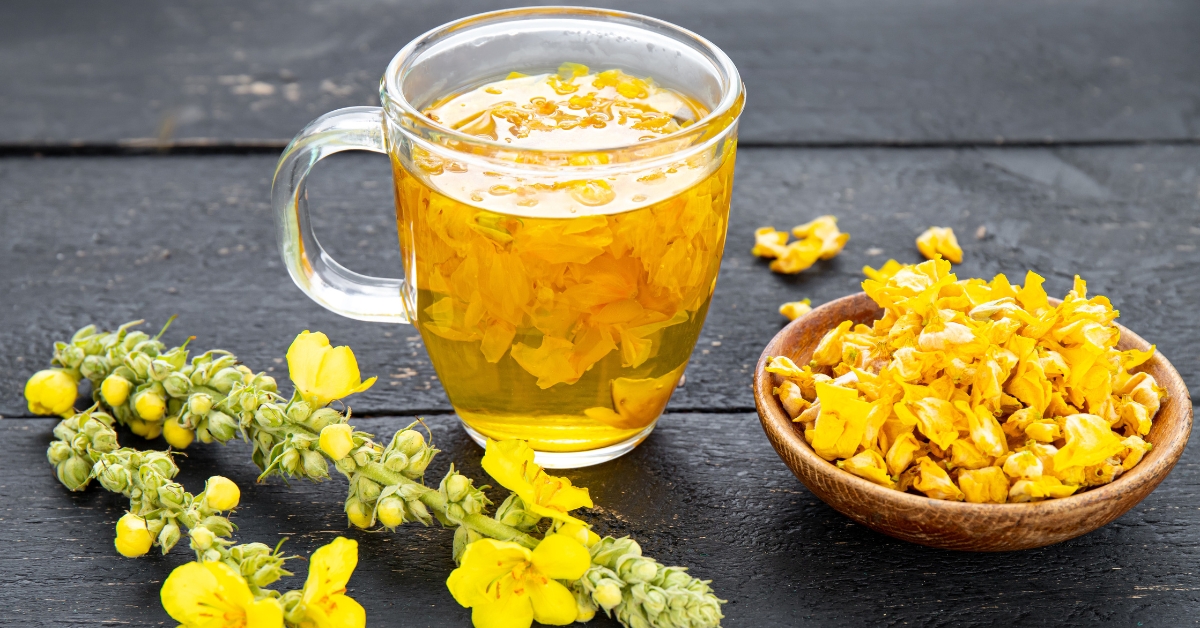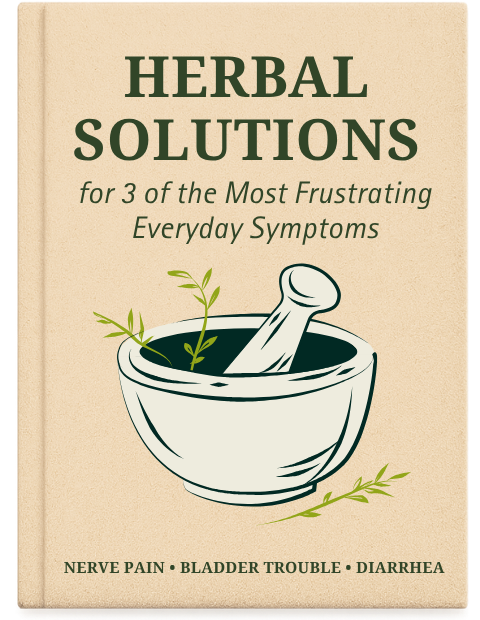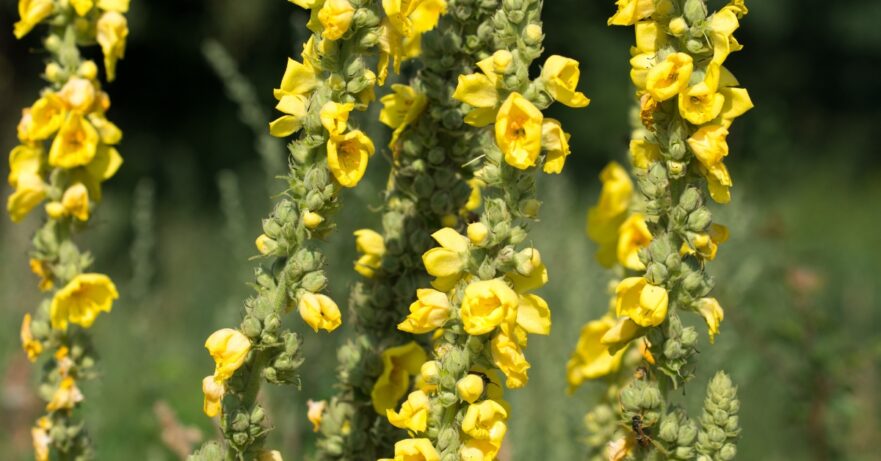In this monograph about mullein:
📖 Introduction | 🌱 Botanical Description | 📜 Traditional Uses | 🔍 Phytochemistry | ✨ Applications and Uses | 🛡️ Safety Profile
📖 Introduction
Mullein (Verbascum thapsus) is a traditional herb commonly used in herbal medicine for its potential medicinal properties. Known for its soft, wooly leaves and tall yellow spikes of flowers, mullein is often used in natural remedies, particularly for respiratory and inflammatory conditions.
| English Name | Mullein |
| Latin Name | Verbascum thapsus |
| Parts Used | Leaves, flowers |
| Traditional Uses | Easing respiratory issues, soothing skin inflammations |
| Herbal Actions | Expectorant, demulcent, anti-inflammatory, antispasmodic |
🌱 Botanical Description
Scientific Classification
Verbascum thapsus belongs to the Scrophulariaceae family.
Physical Characteristics
Mullein is a biennial plant that can grow up to 6 and a half feet tall. It has a rosette of leaves during the first year and a tall stem with yellow flowers in the second year.
Natural Habitat and Cultivation Details
Native to Europe and Asia, mullein has adapted to various environments across North America. It typically grows in well-drained soils in direct sunlight and is often found in fields, waste areas, and roadsides.
📜 Traditional Uses
Mullein has been traditionally used for its potential to soothe the respiratory system and reduce inflammation. It has been applied in various forms, such as teas, tinctures, and topical applications for issues ranging from coughs and colds to ear infections and skin inflammations.

🔍 Phytochemistry (Active Constituents)
Mullein contains several compounds that are believed to contribute to its potential medicinal benefits:
- Flavonoids (e.g., verbascoside): This flavonoid has antioxidant and anti-inflammatory properties, helping protect cells from oxidative stress.
- Mucilage: This gel-like substance coats and soothes irritated mucous membranes, helping to reduce throat irritation and coughing. It can also keep tissues moist, promoting healing.
- Saponins: Known for their expectorant properties, saponins help loosen and expel mucus from the lungs, making it easier to clear airways in conditions like bronchitis or COPD. They may also provide mild immune support.
- Tannins and volatile oils: Tannins offer astringent and anti-inflammatory effects, reducing swelling in the respiratory tract. Volatile oils, though in smaller amounts, contribute antimicrobial properties, potentially aiding respiratory defense.
✨ Applications and Uses
In herbal medicine, mullein is traditionally employed for:
- Respiratory health: Its mucilage content may soothe sore throats, while saponins could help clear mucus from the lungs.
- Skin and wound care: Mullein oil, derived from its flowers, is sometimes used to alleviate inflammatory skin conditions and promote healing.
- Ear infections: An oil infusion is occasionally used as a gentle remedy for earaches and mild ear infections.
While some evidence suggests the plant’s pharmacologically active constituents may support these uses, more robust clinical research is needed to confirm its therapeutic effects for mucous membranes and the skin.
🛡️ Safety Profile
Mullein is generally considered safe for most individuals when used appropriately. It is well-tolerated, but data on drug interactions and rare side effects, such as mild skin irritation, are limited.
Individuals with allergies to plants in the Scrophulariaceae family should exercise caution as with any herb. The safety of long-term use has not been well established, so it is advisable to use mullein in cycles or as needed for specific conditions rather than continuously.
📃 Related Posts
🌱 Related Herbs

